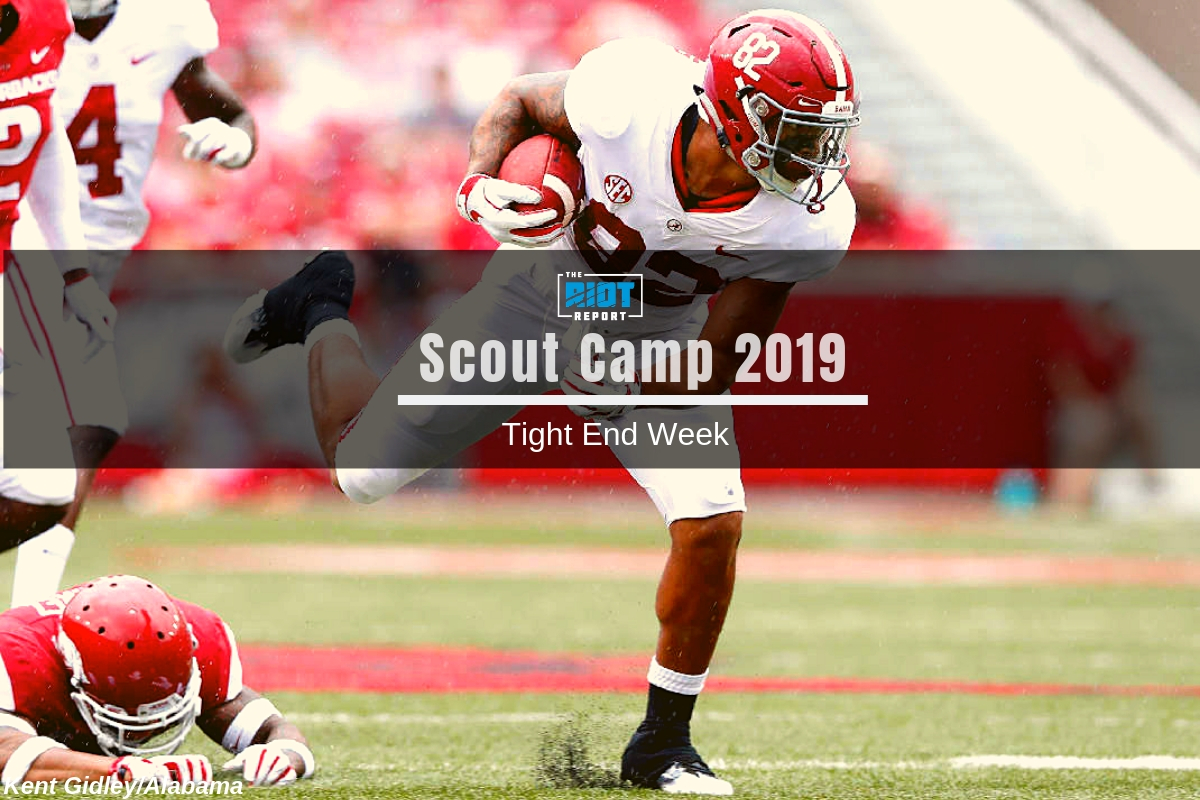With both #WideReceiverWeek and #LinebackerWeek now in the rear view mirror, we can turn our attention to the tight ends, and while it would be surprising to see the Panthers invest much draft capital in the position given the play of Ian Thomas last season and the hopeful return from injury of Greg Olsen, nothing can be ruled out altogether and even if the Panthers don’t take a tight end, it is useful to know what is out there and how this might affect how other teams approach free agency and the draft.
Before we dive into a look at Irv Smith, have a gander at my Big Board and take a listen to our latest episode of The Great British Drafting Show, where we run down the tight end position and what to expect from Thomas, Olsen and the newly-minted-with-a-contract Chris Manhertz.
The Panthers likely aren’t going to be investing a high draft pick in 2019 on a tight end, given the expectation that Thomas will be the Panthers long-term starter at the position, even if he isn’t quite – at least, in my opinion – there to start 2019. In reality, it would be a surprise to see them spend any capital at all on the position, but this is certainly not going to be true for every team around the NFL, and much has already been written about trying to establish who is the top tight end in the class. So how does Irv Smith stack up as a potential high-round draft pick?
Receiving Ability
Of course, for any player to have any chance as a receiver at all they need to be able to catch the ball consistently, and Smith does just that – adjusting to passes away from his frame:
And to underthrown passes:
This isn’t something that necessarily separates Smith from the rest of the tight end group, but with skills such as catching, it is important to show a base level of competence. The other core receiving trait that it is nice to see from tight ends is the ability to separate vertically, and Smith repeatedly showed that kind of vertical speed on tape:
However, as nice as it is to see these core skills, in order to be a plus receiving option in the NFL, Smith will need to show a lot more, in particular an ability to separate against man coverage down the field. While, like almost every college tight end, Smith wasn’t asked to run a full route tree at Alabama, he showed a promising ability to make sharp cuts at high speed:
This is an open receiver at the NFL level, and if the pass leads Smith to the boundary rather than forcing him back towards the defender, this play likely goes for a big gain, and this improved throw leads to that exact result:
It is important not to make sweeping statements based on a couple of plays, but these are very promising; given the simplicity of the route tree he was asked to run, little nuances such as the way he bends inside on the following route add extra encouragement:
The other important aspect of generating consistent separation is the ability to get off the line against press – while this wasn’t something that Smith was asked to do very much at Alabama, he showed good foot quickness to get early leverage, even though his hand usage needs to improve:
Of course, Smith will need to show that he can use his movement skills effectively over a wider route tree in the NFL, but Smith does an awful lot of nice things as a receiver and NFL teams should be highly encouraged about his ability to be a plus receiver in the near future. Of course, adding a little bit extra after the catch doesn’t help:
Up Next: Blocking Ability



